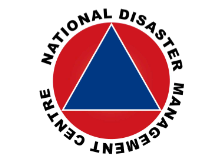Original Research
‘Too many mice make no lining for their nest’ – Reasons and effects of parallel governmental structures for disaster risk reduction and climate change adaptation in Southern Africa
Jàmbá: Journal of Disaster Risk Studies | Vol 13, No 1 | a1041 |
DOI: https://doi.org/10.4102/jamba.v13i1.1041
| © 2021 Per Becker, Magnus Hagelsteen, Marcus Abrahamsson
| This work is licensed under CC Attribution 4.0
Submitted: 10 August 2020 | Published: 17 June 2021
Submitted: 10 August 2020 | Published: 17 June 2021
About the author(s)
Per Becker, Division of Risk Management and Societal Safety, Faculty of Engineering, Lund University, Lund, Sweden; and Unit for Environmental Sciences and Management, Faculty of Natural and Agricultural Sciences, North-West University, Potchefstroom, South AfricaMagnus Hagelsteen, Division of Risk Management and Societal Safety, Faculty of Engineering, Lund University, Lund, Sweden
Marcus Abrahamsson, Division of Risk Management and Societal Safety, Faculty of Engineering, Lund University, Lund, Sweden
Abstract
Many African countries face escalating challenges of increasing disaster risk and anticipated impacts of climate change. Although disaster risk reduction (DRR) and climate change adaptation (CCA) are tightly linked and comprising virtually identical practices in vulnerable countries in Southern Africa, research has identified parallel governance structures across the region. This study applied comparative case study research, based on 27 semi-structured interviews, to investigate the reasons for and effects of such parallel structures for DRR and CCA in Botswana, Mozambique, the Seychelles, Tanzania and Zambia. It revealed overwhelmingly negative effects in terms of unclear mandates and leadership, uncoordinated efforts, duplication of efforts, suboptimal use of resources and competition over resources and control. The study identified both external reasons for the parallel structures, in terms of global or international initiatives or incentives, and internal reasons, with regard to the history and quality of the governance structures. Although the identified negative effects are common to a range of complex nexuses, there is a clear distinction with the DRR–CCA nexus comprising virtually indistinguishable practices in Southern Africa. There is, as such, no practical reason for keeping them apart. The parallel structures for DRR and CCA are instead the result of pervasive institutionalisation across the region, driven by coercive, mimetic and normative pressures coming from both within and abroad. Although much point to the difficulties of changing the studied institutional arrangements, these parallel structures for DRR and CCA must be addressed if the populations in Southern Africa are to enjoy safety and sustainable development.
Keywords
disaster risk reduction; climate change adaptation; DRR; CCA; parallel; governance; Southern Africa; SADC.
Metrics
Total abstract views: 2288Total article views: 3214
Crossref Citations
1. Disaster risk reduction: Integrating sustainable development goals and occupational safety and health in festival and event management
Leonie B. Louw, Elriza Esterhuyzen
Jàmbá: Journal of Disaster Risk Studies vol: 14 issue: 1 year: 2022
doi: 10.4102/jamba.v14i1.1205

